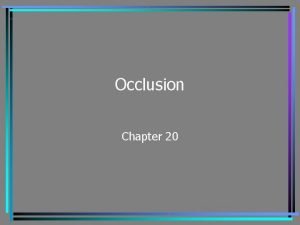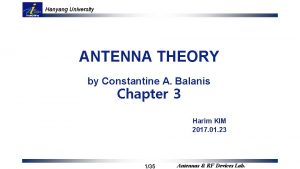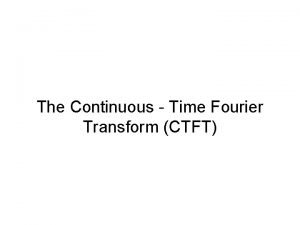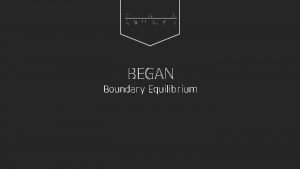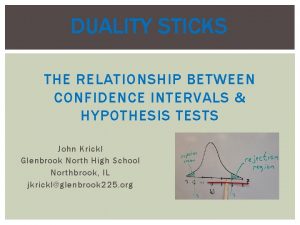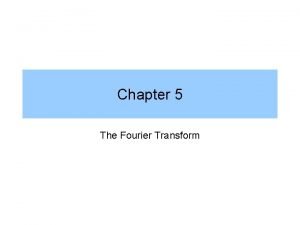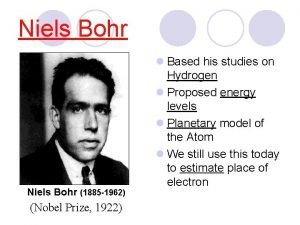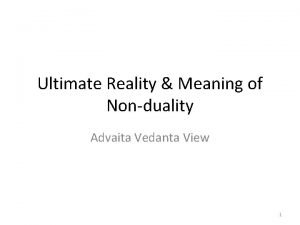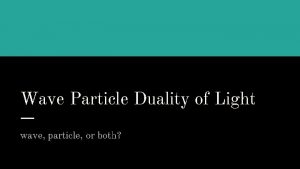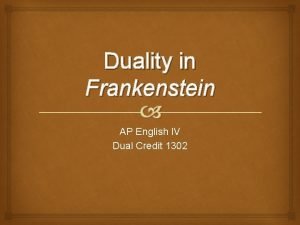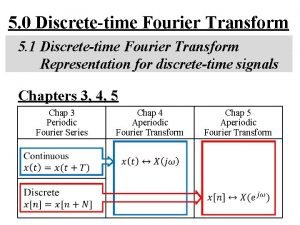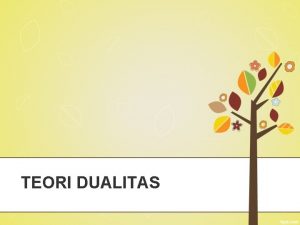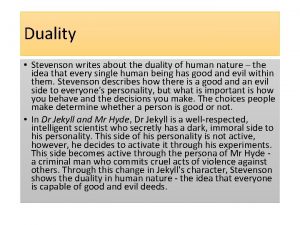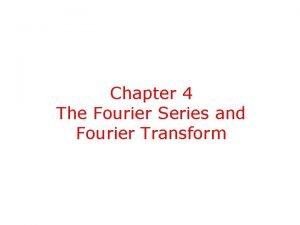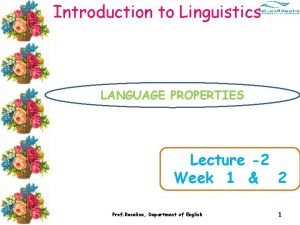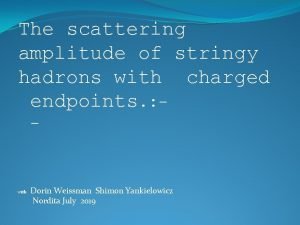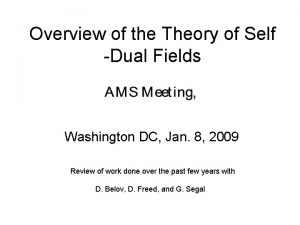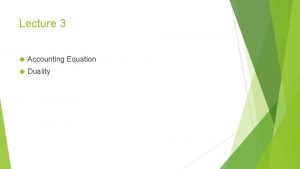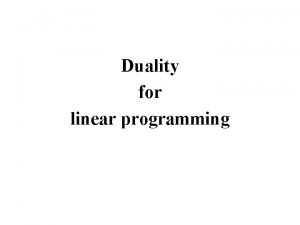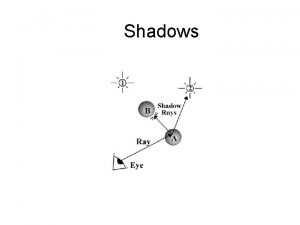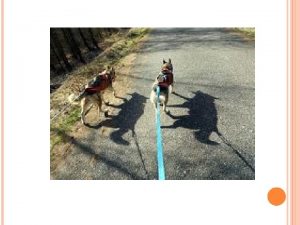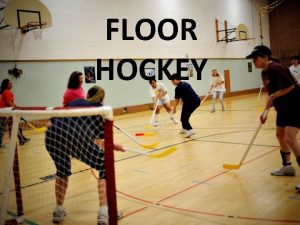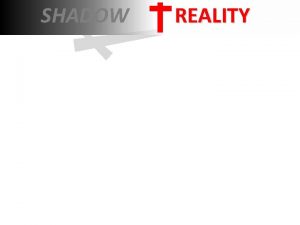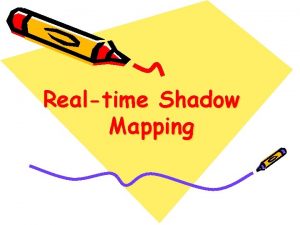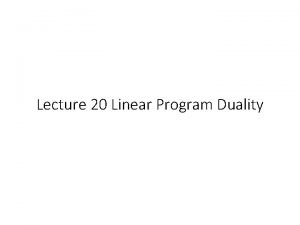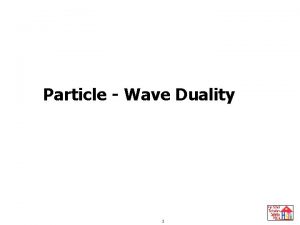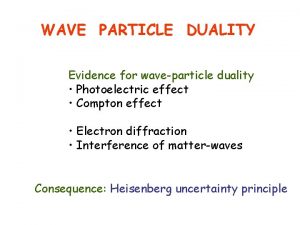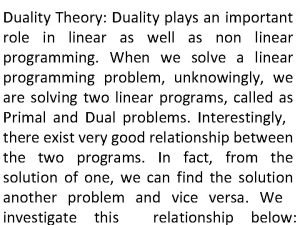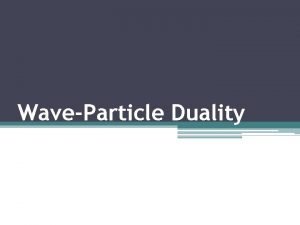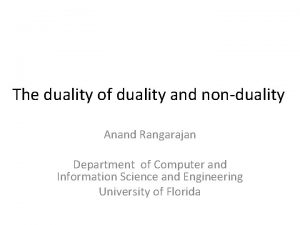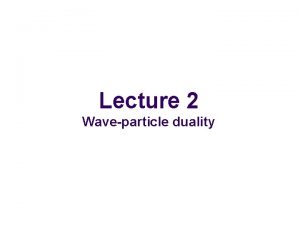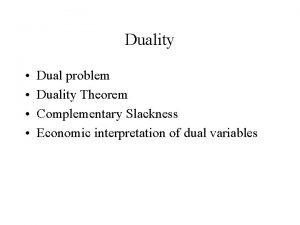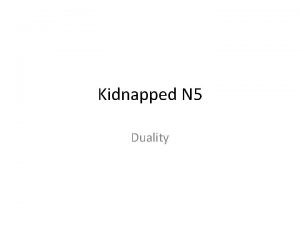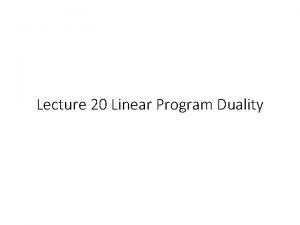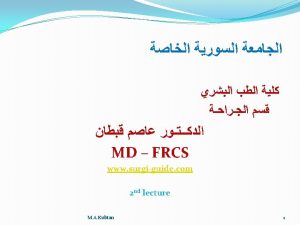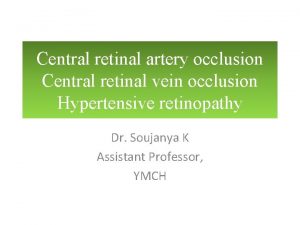Shadows occlusion Shadow occlusion duality Floor shadows Shadow





















- Slides: 21

Shadows & occlusion § § § § Shadow - occlusion duality Floor shadows Shadow buffer Soft shadows From point visibility Convex occluders Occluder fusion Cell-to-cell visibility Jarek Rossignac http: //www. gvu. gatech. edu/~jarek MAGIC Lab Georgia Tech, IIC, GVU, 2006 1

Lecture Objectives § Why study visibility and shadows? § Define terminology – Hidden, detected, guarded, clear – From-point and from-cell visibility – Shadow region, umbra, penumbra § Understand principles, properties, proofs – Occlusion by a triangle – Testing against convex occluders – Apparent convexity and hoops – Occluder fusion – Umbra and penumbra of convex occluders § Clarify relation between visibility and shadows § Relate and motivate from-point and from-cell visibility § Conservative & approximate from-point visibility algorithms § Conservative & approximate from-cell visibility algorithms § Relation to shadows, umbra, penumbra Jarek Rossignac http: //www. gvu. gatech. edu/~jarek MAGIC Lab Georgia Tech, IIC, GVU, 2006 2

Motivation § Visibility – Most objects in a scene are hidden from any given view point – Rendering them wastes GPU cycles – Need efficient techniques for rejecting what is obviously hidden • Rejection tests can be exact, conservative (reject more), approximate § Shadows – Objects in the shadow do not reflect direct illumination – Want to know which light sources illuminate an object – Need a quick test for being in the shadow § Visibility and shadows are defined in terms of occluders – Surfaces or objects that may block the passage of light – When placed between the object and the viewer/light Jarek Rossignac http: //www. gvu. gatech. edu/~jarek MAGIC Lab Georgia Tech, IIC, GVU, 2006 3

Shadows provide depth clues Jarek Rossignac http: //www. gvu. gatech. edu/~jarek MAGIC Lab Georgia Tech, IIC, GVU, 2006 4

4 x 4 matrix formulation (review) u 0 0 0 1 0 0 u Ux Vx Wx 0 C -S 0 0 0 v 0 0 0 1 0 v Uy Vy Wy 0 S C 0 0 w 0 0 0 1 w Uz Vz Wz 0 0 0 1 0 0 0 1 S(u, v, w) 1 T(u, v, w) R(U, V, W) RZ(a) Ux Vx Wx u x Ux x + Vx y + W x z + u Uy Vy Wy v y Uy x + Vy y + W y z + v Uz Vz Wz w z 0 0 0 1 Uz x + Vz y + W z z + w = 1 1 M • P Jarek Rossignac http: //www. gvu. gatech. edu/~jarek MAGIC Lab Georgia Tech, IIC, GVU, 2006 5

Rotation matrix § ||U||=||V||=1 § U • V = 0 § W=U V § R = { U V W }, 3 x 3 matrix § R’ = R, inverse = transpose § Rotation to map Z to W – – U: =Y W or X W U: =U/||U|| V: =Wx. U RZto. W={ U V W } Ux Vx Wx Uy Vy Wy Uz Vz Wz R Ux Vx Wx 0 Uy Vy Wy 0 Uz Vz Wz 0 0 1 Ux Uy Uz Vx Vy Vz Wx Wy Wz inverse R’ § Rotation to map W to Z axis – RZto. W Jarek Rossignac http: //www. gvu. gatech. edu/~jarek MAGIC Lab Georgia Tech, IIC, GVU, 2006 6

Floor shadow § Compute the shadow S of point P on the floor (z=0) with light coming in direction L P L S = P + (P /L ) L z z Write the shadow projection as a 4 x 4 matrix Jarek Rossignac http: //www. gvu. gatech. edu/~jarek S 1 0 Lx/Lz 0 0 1 Ly/Lz 0 0 0 0 1 MAGIC Lab Georgia Tech, IIC, GVU, 2006 7

Floor shadows § Depth cue, realism, light position § Draw object twice – Second time: projected on the ground § Does not support self-shadows 1 0 Lx/Lz 0 0 1 Ly/Lz 0 0 0 0 1 P L S = P + (Pz/Lz) L Jarek Rossignac http: //www. gvu. gatech. edu/~jarek Durand&Cutler, MIT MAGIC Lab Georgia Tech, IIC, GVU, 2006 8

Shadow map (supports self-shadows) § Pre-render from light : store z-buffer as shadow map (texture) § While rendering, check whether fragments are in shadow – Use GPU to perform the check (compare z to texture) Shadow-castikng fragments must be in light frustum E Jarek Rossignac http: //www. gvu. gatech. edu/~jarek MAGIC Lab Aliasing Georgia Tech, IIC, GVU, 2006 9

Shadow volumes on GPU § Heidmann (IRIS Universe 1991), Everitt (n. Vidia 2002) – Shadow volume = triangles facing light + silhouette extrusions § Brabec-Seidel (EUROGRAPHICS 2003) – Add silhouette identification in hardware Jarek Rossignac http: //www. gvu. gatech. edu/~jarek MAGIC Lab Georgia Tech, IIC, GVU, 2006 10

Soft shadows (area light sources) § Polygonal area light source point source umbra Assarsson et al. Jarek Rossignac area source penumbra Polygons cast curved shadows http: //www. gvu. gatech. edu/~jarek MAGIC Lab Georgia Tech, IIC, GVU, 2006 11

Hard vs. soft shadows point source umbra Jarek Rossignac http: //www. gvu. gatech. edu/~jarek area source penumbra MAGIC Lab umbra Georgia Tech, IIC, GVU, 2006 12

How can we compute (pen)umbras? § Difficult because they involve cells of 3 D space partition by planes and curved surfaces (even if the shape and light source is polygonal) Jarek Rossignac http: //www. gvu. gatech. edu/~jarek MAGIC Lab Georgia Tech, IIC, GVU, 2006 13

Polygons cast curved shadows! Jarek Rossignac http: //www. gvu. gatech. edu/~jarek MAGIC Lab Georgia Tech, IIC, GVU, 2006 14

Soft Shadow volumes § Using graphics hardware Ulf Assarsson 1, Michael Dougherty 2, Michael Mounier 2, and Tomas Akenine-Möller 1 1 Department of Computer Engineering Chalmers University of Technology 2 Xbox Advanced Technology Group, Microsoft Jarek Rossignac http: //www. gvu. gatech. edu/~jarek MAGIC Lab Georgia Tech, IIC, GVU, 2006 15

Shadow Volume § A wedge for each “silhouette” edge Jarek Rossignac http: //www. gvu. gatech. edu/~jarek MAGIC Lab Georgia Tech, IIC, GVU, 2006 16

Rasterize the edges Jarek Rossignac http: //www. gvu. gatech. edu/~jarek MAGIC Lab Georgia Tech, IIC, GVU, 2006 17

Results § www. ce. chalmers. se/staff/tomasm/soft/ Jarek Rossignac http: //www. gvu. gatech. edu/~jarek MAGIC Lab Georgia Tech, IIC, GVU, 2006 18

Texture Map § Glue a picture on a surface § Associate with each vertex P the (u, v) coordinate of the corresponding pixel in the image Express P in the camera coordinate system P P’ v C Use the perspective to get P’ u Camera parameters for the picture Jarek Rossignac http: //www. gvu. gatech. edu/~jarek E MAGIC Lab Georgia Tech, IIC, GVU, 2006 19

Shadow buffer § Pre-compute z-buffer for scene from the position of the light source § As you rasterize a point on a triangle, check whether it is visible from the light – Compute its P’ in the perspective-transformed space of the camera – Check whether Z[P’X, P’Y] < P’Z E Jarek Rossignac http: //www. gvu. gatech. edu/~jarek MAGIC Lab Georgia Tech, IIC, GVU, 2006 20

Shadow map § From Durand & Cutler Jarek Rossignac http: //www. gvu. gatech. edu/~jarek MAGIC Lab Georgia Tech, IIC, GVU, 2006 21
 Sphere of monson
Sphere of monson Incisal guidance definition
Incisal guidance definition What was the first human language
What was the first human language Radiation integrals and auxiliary potential functions
Radiation integrals and auxiliary potential functions Ctfs ctft
Ctfs ctft Boundary equilibrium gan
Boundary equilibrium gan Duality of confidence interval and hypothesis test
Duality of confidence interval and hypothesis test Rect t/2
Rect t/2 Niels bohr analogy
Niels bohr analogy Advaita vedanta definition
Advaita vedanta definition Wave-particle duality
Wave-particle duality Duality in frankenstein
Duality in frankenstein Duality of fourier transform
Duality of fourier transform Pengertian dualitas
Pengertian dualitas Jekyll and hyde quotes
Jekyll and hyde quotes Service supply relationships
Service supply relationships Parseval's equation
Parseval's equation Characteristics of language displacement
Characteristics of language displacement Holographic duality theory
Holographic duality theory Chern simons theory
Chern simons theory What is duality in accounting
What is duality in accounting Weak duality theorem proof
Weak duality theorem proof
